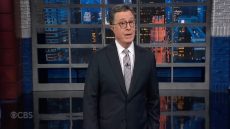Donald Trump has hit a historic low in net approval ratings for a new president. As of January 31, 2025, his approval stands at minus 1 percent, a record since modern polling began. What does this mean for the political landscape in the U.S.?
- Trump has lowest net approval rating ever.
- 91% of Republicans approve of Trump.
- Approval gap between parties is significant.
- Trump's disapproval stands at 48%.
- Highest approval at inauguration was JFK.
- Trump's approval rating has increased post-election.
Trump’s Record Low Approval Rating: What It Means for America
How does Trump’s low approval rating impact his presidency and the nation? With such a significant divide between party lines, the question arises: can he bridge this gap?
Understanding Trump’s Approval Ratings and Party Affiliation
Trump’s approval ratings reveal a stark political divide in the U.S. His current positive approval is at 47 percent, yet disapproval stands at 48 percent. This polarization is evident in party affiliations, with 91 percent of Republicans approving of his performance, while only 6 percent of Democrats do. This 85-point gap is significant, especially compared to previous presidents.
- Trump’s net approval rating is the lowest since polling began.
- 91% of Republicans approve, compared to just 6% of Democrats.
- Disapproval ratings are high, standing at 48%.
- Historical context shows a growing divide among party lines.
The Historical Context of Presidential Approval Ratings
Trump’s approval ratings are not just numbers; they reflect a historical trend. For instance, John F. Kennedy started his presidency with a staggering 72 percent approval. In contrast, Trump’s ratings show a significant decline, indicating a shift in public sentiment. This trend raises questions about how future presidents will navigate their terms amid such polarization.
Implications for Trump’s Future and American Politics
The future of Trump’s presidency may hinge on his ability to connect with a broader audience. With a majority of independents and Democrats disapproving of his performance, will he adapt his strategies to gain wider support? The current political climate suggests that without significant changes, Trump’s administration may face ongoing challenges.
In conclusion, Trump’s record low approval rating serves as a critical indicator of the current political landscape in the U.S. As polarization continues to shape American politics, both Trump and future leaders must consider how to unite a divided nation.

































